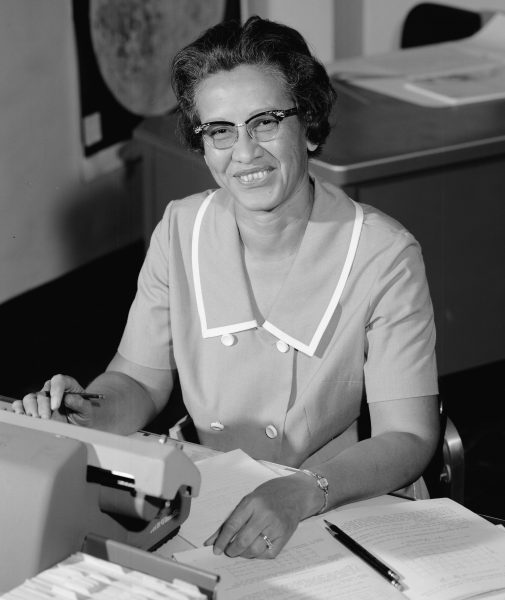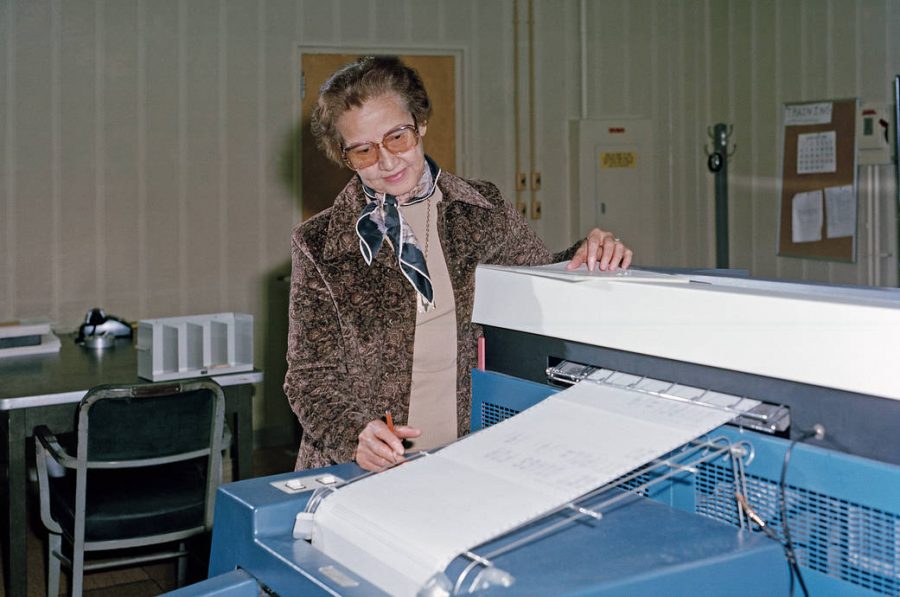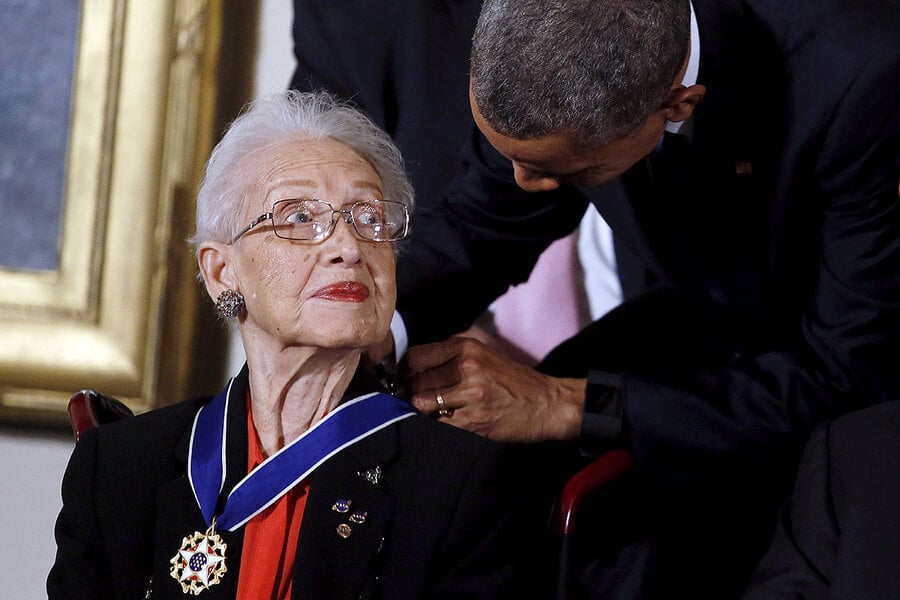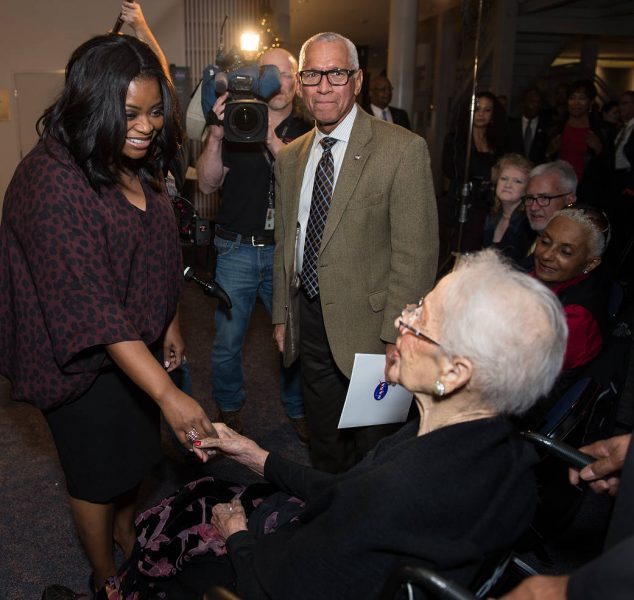

In remembrance of Katherine Johnson, who would have celebrated her 104th birthday tomorrow, August 26th. She lived until 101, when she passed in 2020.
The Land of the Free. Millions of immigrants came to the United States of America since our country gained independence in search of opportunity and freedom. For some, the hypothesis that there was a better life waiting for them in America was true, finding opportunities in the workforce and living stable lives with their families. For others, this was not the case.
The actions of those who came before us still carry a heavy weight today. The American dream is often conceptualized as doing what it takes to achieve progression and snatching a happy life for yourself within a land of opportunity. This is why we must remember those who managed to still achieve this against the odds, and the challenges that were and are still faced by the marginalized. If America touts the value of work ethic, then look no further for this embodiment than Katherine Johnson.
Johnson was born to a motivated family of 6 in West Virginia, 1918. Johnson’s parents were determined to ensure college completion for all 4 of their children. Katherine Johnson grew to share that same vision, achieving academic excellence throughout grade school and graduating high school at only 13 years old(1). She possessed an affinity for numbers, setting her up to break the barriers before her.
Luckily for Johnson, her family had the financial ability to do what it took to guarantee opportunities for education. Her hometown did not offer public education for black Americans after 8th grade. For her to continue into high school, her family moved 120 miles so that she could attend a high school that accepted her(2). But this does not mean that she didn’t face tremendous challenges just because of that opportunity. Discrimination and a segregated society cast a dark shadow over American life, and regardless of what Katherine Johnson had at her disposal, the challenges she would face were significant.
Katherine Johnson’s potential was beaming to everyone that met her or even knew of her, which resulted in close allies and staunch enemies. Amongst the allies, Johnson’s success and drive was not lost upon college professor William Schiefflin Claytor, who served as a mentor to her and created an entire geometry class just for her to hopefully become a research mathematician. She was the first black woman to attend the school(3). She undoubtedly faced discrimination while in this position, but she was determined to not let it affect her goals.
After graduating, Katherine Johnson went on to begin a teaching career. She wanted more immediately, but to educated black women at the time, teaching was almost always the only option. Because of the pay gap that existed between races at the time, Katherine worked as a maid during the summer break, and her husband Jimmie Goble (another teacher who she met and then married in 1939) worked as a chauffeur(1) After taking a break to care for her newborn, Katherine learned of a great opportunity within the NACA (which later became NASA) as a ‘computer’, which were women with math backgrounds employed to complete calculations for the engineers. Johnson recounts on the first day working there, a white man noticed her and walked out(4). The NACA office was segregated, with even the black women who worked as computers being separated from the white women in the same position. White computers only needed a high school diploma to work, while black computers needed a college degree paired with a high GPA. Because of this, the black computers were more educated for the position. Johnson was known for her exceptional work ethic, attention to detail, and math ability, often pointing out errors in calculations that others missed(2). She was quickly noticed by engineers for her abilities, and was soon working with them on important projects, namely in the Space Race against the Soviet Union. She performed calculations for the moon landing of 1969, tasked with doing the numbers for the trajectory of Alan Shepard’s historic flight. This reflects the trust and respect that Johnson earned from her colleagues and supervisors, and the success in the moon landing drove those points home(2).


Image provided by NASA, 2016.
Katherine Johnson died at 101 years old in February of 2020, but not before her life became known by many. She authored books and her story was featured in a 2016 film called Hidden Figures. Her life was dedicated to shattering barriers, embodying the tenants that make up the American dream. But Johnson had to imagine and execute her own dream, and against the odds, she rose to become a crucial and indispensable component to the success of NACA in the Space Race. More importantly, however, she helped pave the way for black Americans to take hold of their futures in the workforce and American society.
1- Boomer, Lee. “Life Story: Katherine Johnson.” Women & the American Story, 29 Nov. 2022, wams.nyhistory.org/growth-and-turmoil/cold-war-beginnings/katherine-johnson/.
2- Daros, Andrzej, et al. “Katherine Johnson – Mathematician Fighting Discrimination.” GentleWoman Polska, 28 Apr. 2023, gentlewoman.eu/en/katherine-johnson-anti-discrimination-mathematician-and-first-african-american-woman-at-nasa/.
3- Stauss, Joanna, and Emily Staniforth. “Katherine Johnson: Pioneering NASA Mathematician.” Space.Com, Space, 11 Nov. 2022, www.space.com/katherine-johnson.html.
4- Dailymail.com, Erica Tempesta For. “The Real Story behind Hidden Figures: NASA Mathematician Katherine Johnson – Whose Career Inspired the Award-Winning Movie – Lays Bare Her Struggles with Racism and Sexism in Eye-Opening Posthumous Memoir.” Daily Mail Online, Associated Newspapers, 3 June 2021, www.dailymail.co.uk/femail/article-9623507/Hidden-Figures-mathematician-Katherine-Johnson-lays-bare-battle-against-racism.html.